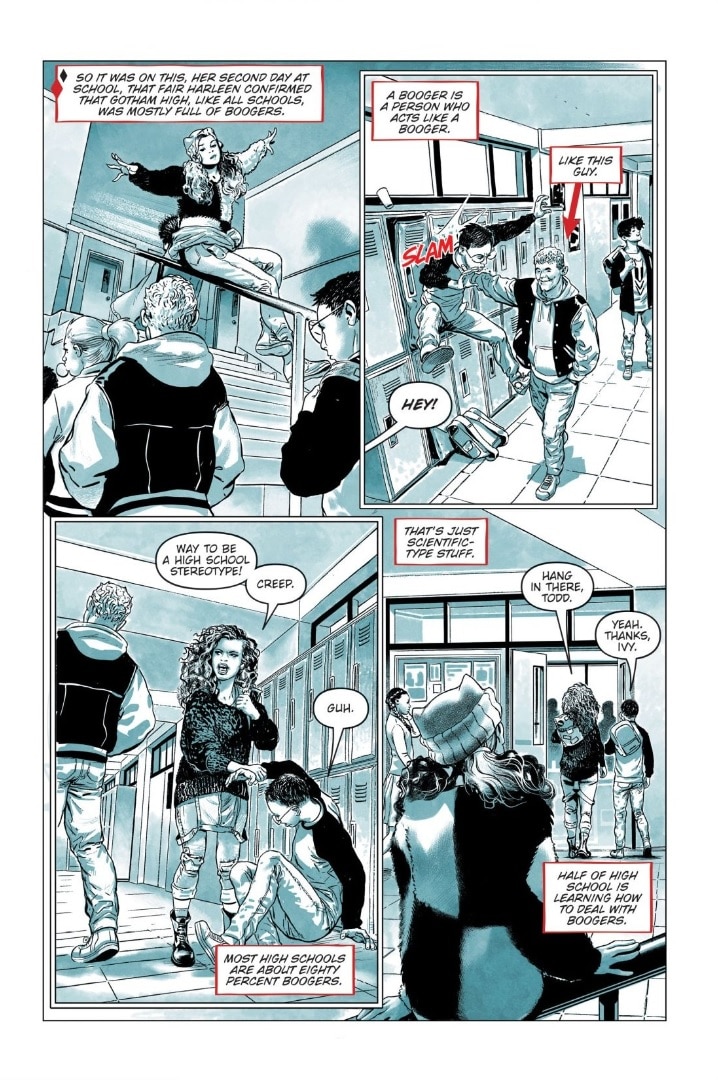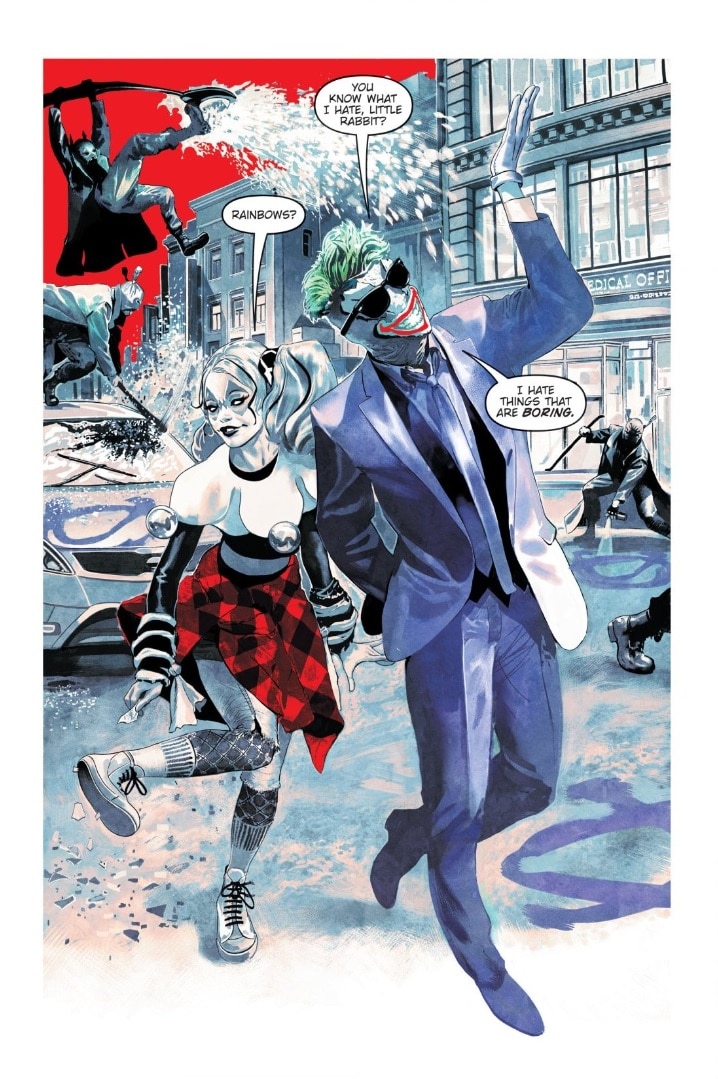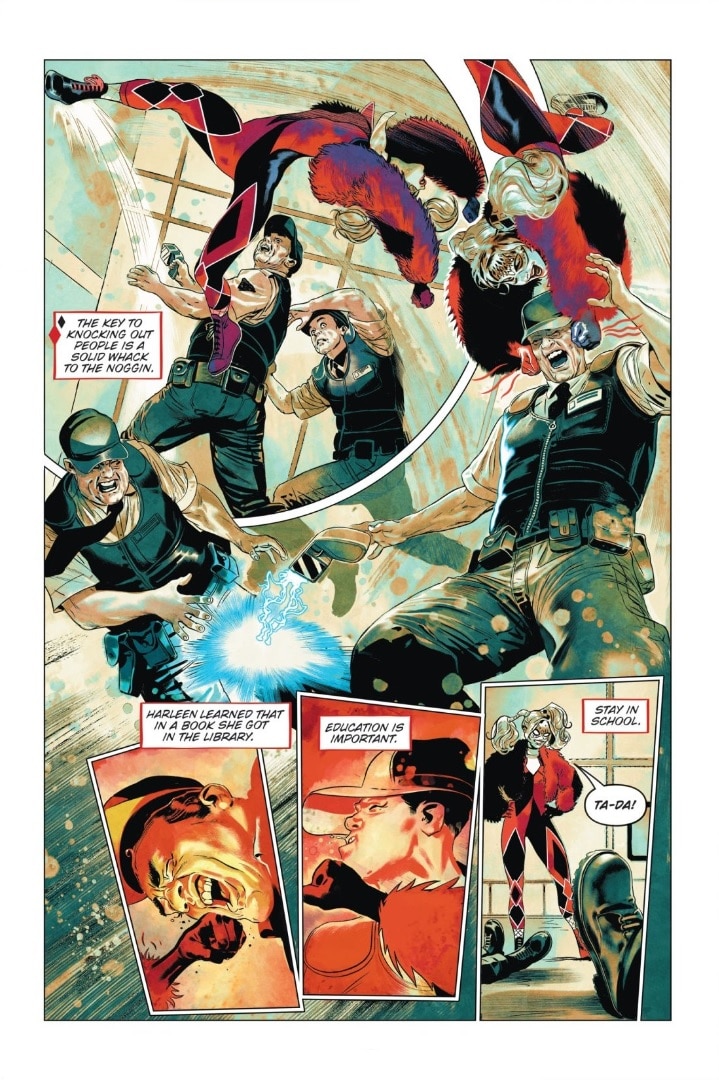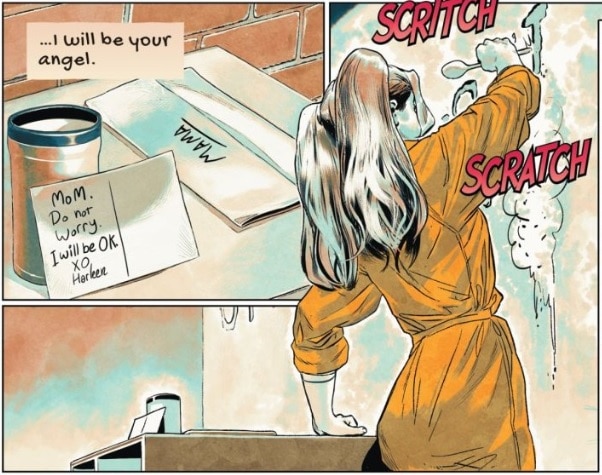SPOILER ALERT: The following contains spoilers for Harley Quinn: Broken Glass. We suggest reading it after you've read the book, but you do you, queen!
Everyone knows the infamous Harley Quinn. The clown princess of crime who wreaks havoc throughout Gotham City. The crazy yet cute villainess who sometimes has her anti-hero moments. Since her debut over 25 years ago, Harley has become one of the single most popular comic book characters out there. However, in the new young adult graphic novel, Harley Quinn: Breaking Glass by Mariko Tamaki and Steve Pugh, we get an entirely new and fresh interpretation of this beloved character as someone who is not only extremely relatable, but someone worthy of being redeemed.
Tamaki brings readers along on a journey through Harleen Quinzel’s young adult life at Gotham High and creates an origin story that seems to set her on the path to becoming more of a hero than villainess. Harleen’s young life isn’t easy as she is sent off by her mom to go live in Gotham City with her grandmother, only to find out that she’s passed away. Harleen winds up living with her new friend Mama, a loveable drag queen who ends up taking care of Harleen in her own unique way. Harley’s life at school is also anything but normal or easygoing. Her only friend is Ivy, the school’s student social activist. Together the two protest the sexist film club, and often end up unjustly getting in trouble.

What is so fascinating about Harleen as a character, is that despite all of her recent hardships in life, she is still happy-go-lucky, spirited and has a great sense of humor. One can look at this as her being naive to her situation, but reading Breaking Glass, it seems more as if Harleen just takes her situations in stride and tries to remain positive. It’s an inspiring outlook, and it’s clear that Harleen’s heart is in the right place, even if her way of doing things is sometimes seriously off, that you can’t help but come to like the impish young teen.
In one of the many flashbacks with Harleen and her mother in Harley Quinn: Breaking Glass, the theme and conversation of devils and angels pops up. “The path of the angels is long and hard,” counsels Harleen’s mother. “So hard that most people don’t want to take it. The path of the devil is a straight-down drop. Fast and easy. You keep your eye on what you’re fighting for little girl.”
This sticks with Harleen throughout her young adult life and throughout the graphic novel as she makes decisions on what she wants to stand for.

When the greedy Kane Corporation begins closing down Gotham’s lower income housing complexes to build new high-end condos for the wealthy, Harleen sees how destructive this calculated wave of gentrification is to the people she holds most dear, like Ivy and Mama. She wants to help her friends and family and send a message to the Kane Corporation. The question is how? When all of the odds are against you and victory seems impossible, what’s the right response?
One night after she smashes in a window of a Kane Coffee shop in retaliation for someone, presumedly from the corporation, breaking a window at Mama’s Drag Show, she meets a mysterious figure who calls himself the Joker. And as a reader familiar with Harley’s established history, you begin to think, “Is this the part where the Joker’s influence ends up turning her to the dark side?”
Maybe…but maybe not. You’ll have to read the book to find out! But it was pleasantly surprising to see that the Joker’s appeal in this story is tied directly to bringing down a corporation which is hurting her loved ones. During one conversation with the Joker in which he tries to convince her to help him bring chaos down upon the city of Gotham and the Kane Corporation, Harleen replies to him with, “I want to help people…the right way.”

While the Joker really just wants to bring chaos to the city and stir up resentment between its residents, Harleen joins him on his quest for supposed righteousness, with the belief that she is doing the right thing for the ones she loves. That’s a lot different than her traditional motivations, which can be selfish depending on which of Harley’s several backstories you prefer.
After things go awry for the newly proclaimed Harley Quinn, she winds up in prison. While the Harley we know from earlier comics has spent plenty of time in prison, it’s a shocking twist here. In this story, it feels unfair and wrong, which is a pretty huge change from how we traditionally see the character when she’s behind bars.
As Harley writes a letter to Mama from prison, she sums up herself perfectly, and boldly for all to know. “I might not know what I am, but I know what I have to do,” she writes. “And Mama, if you ever need one…I will be your angel.”

As the theme of good and bad and angels and devils comes full circle at the end, Tamaki lets us know exactly the type of person Harley Quinn now is. No longer one of DCs most crazy villains, but with the potential to become one of DCs most beloved heroes.
Harley Quinn: Breaking Glass by Mariko Tamaki and Steve Pugh is now available in bookstores, comic shops and as a digital graphic novel.
Amanda Levine loves everything DC, especially Harley Quinn, whom she often cosplays. Her favorite Young Adult books have always been Harry Potter and the amazing world that J.K. Rowling created. You can find Amanda and her cosplay adventures on Instagram or on Twitter.




















